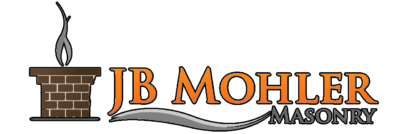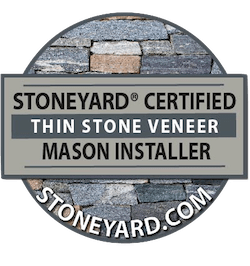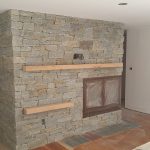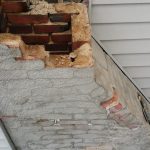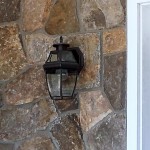Are you having a chimney built in your home, or having one constructed as part of a brand new custom home? Perhaps you have an existing chimney that you feel may not be safe or is in need of a Massachusetts chimney repair. You may be curious about the basic components which comprise the anatomy of a chimney. Understanding the structure of a chimney can help you to choose what type of chimney to have built, why its not functioning properly, or why your masonry contractor advised you to have it town down and rebuilt. I hope this article will help reveal some of the mysteries of how a chimney is built, and give readers some insight should they need a mason to come to their home.
A chimney is simply a vertical structure between your furnace, stove or fireplace and the outside of your home which is necessary for ventilation purposes. This vertical tube contains a throat, smoke chamber, flue liners, a chimney crown, damper and a cleanout door. The passageway through which the smoke is drawn outside the building is called a flue. A chimney may have one or more flues depending on how many appliances are connected to it. If you have a single chimney serving multiple appliances, for example a furnace and a wood stove, you would have two flues inside your chimney. In a future discussion I will discuss the throat and smoke chamber, and why they are important.
Flues and Flue Liners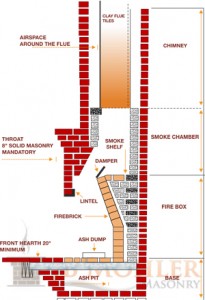
Flues are originally what is common in old chimneys, just a hollow chamber that smoke travels upwards. The individual flues were built using brick partition walls sectioning off the different appliances. Today we have flue liners. These are stack able tiles or insulating materials which assist the chimney in doing its job, and also make the chimney safer and easier to clean. Flue liners can be made of a variety of materials but the one most commonly used by a masonry contractor is terra-cotta. These are made with clay and baked at a high heat. The design of these flue liners provides a very smooth finish so that a uniform chamber is built that remains cleaner with less creosote sticking onto it.
Chimney Crown
On the very top of your chimney you’ll find the chimney crown. This should be a poured in place concrete cap that slopes away from the flue liners. The slope allows water to run off keeping the chimney dry on the inside. The flue liners should extend up past the crown so no water will run down inside.
Damper
For every fireplace there should also be a damper. A damper is a metal door located on top of the fireplace or the top of the flue tile. It is designed to be easily opened when the fireplace is in use and closed when it is not in use. A properly functioning damper is essential for trouble free usage of the fireplace. A damper on the top of the chimney has additional benefits such as keeping animals, leaves, rain and snow out of the chimney and out of your living room!
Cleanout Doors
On the bottom of the chimney or its base, you’ll find the cleanout door or doors—for each flue there should be a corresponding door (in most circumstances). Fireplace ashes are swept down through an ash dump, and when your chimney is cleaned the debris drops into the ash pit where the cleanout doors are located. This allows easy access for your chimney professional to clean what soot has been dislodged.
These are the basic components of a chimney. As you can see, a chimney is fairly simple, but each of its parts serves an important role. There are many different options for a chimney’s design as well as the materials. In the future I will discuss the throat and smoke chamber. This is the heart of any properly working Massachusetts fireplace and also provides protection from the heat a fireplace produces.
